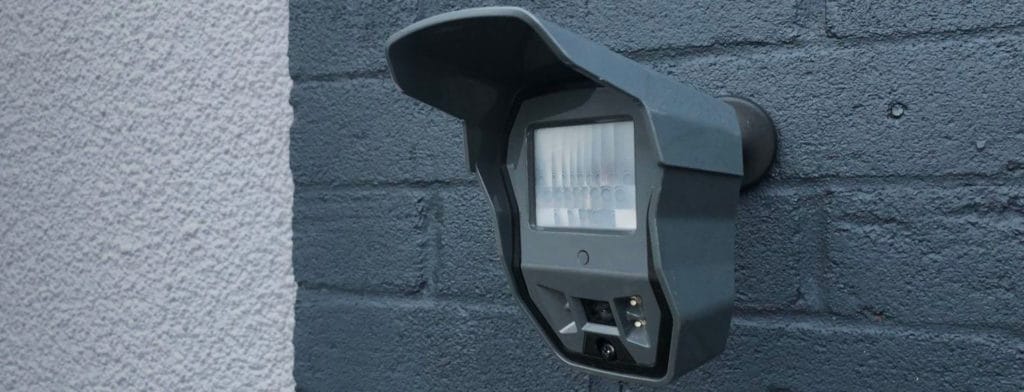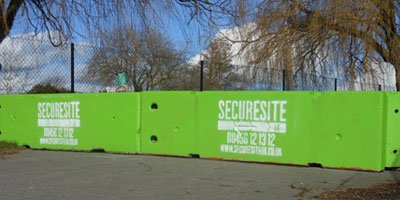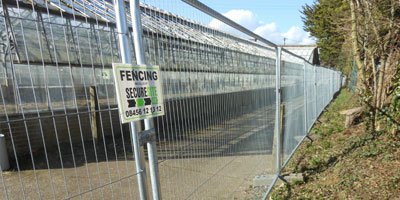As a residential, commercial or industrial property owner or manager, it’s likely your property(s) will become vacant for a period of time.
Sadly, this may be more of a common occurrence these days due to the impact that COVID-19 has had on many businesses.
As you’ll be aware, a vacant property that is unprotected will be attractive to thieves, vandals and squatters, so it’s important that you remember the best ways to secure your premises.
In this post, we’ll be taking a look at 6 top things you can do to secure your property, providing additional, expert insights along the way.
Read on to find out more…and, don’t forget, if your vacant property requires urgent protection, licensed security guards will always deliver this quickly and effectively.
Tip #1‘Board-Up’ All External Windows And Doors

‘Boarding up’ has become a bit of a colloquial term these days, since the best way to secure windows and doors is with solid steel.
Some companies still use plywood or OSB to ‘board up’ windows and doors, but this method is less effective due to the fact that plywood is easy to remove, break, vandalise and set fire to.
Ironically, the money you may save through boarding up with plywood (when compared to steeling up) may be overridden by the money you lose through damage, theft and vandalism of your vacant property.
So, for maximum protection, we highly recommend steeling up your windows and doors. Steel is impenetrable, non-combustible and can’t be unscrewed by traditional Phillips screwdrivers.
If occasional authorised access is required, solid steel doors with five-lever deadlocks will block access to anyone without the right keys.

Tip #2 Install A Wireless Intruder Alarm CCTV System With Remote Monitoring And Response

As with most things, the level of CCTV service you go for will be dependent on budget and level of threat. If your vacant property is in an area that experiences high levels of crime, then your CCTV system should be specified appropriately.
Of course, the more money you spend on CCTV technology, monitoring and security response, the more security features you’ll benefit from.
Nonetheless, CCTV in itself can act as a deterrent for would-be thieves, vandals and squatters, so no matter how advanced your system might be, the sheer presence of cameras may be enough to deter certain people and/or groups.
We recently wrote a blog which highlighted the best CCTV alarm triggers and security responses for construction sites, but the themes, features and options are also relevant for vacant properties. Click the link to find out more.
Tip #3 Install Concrete Barriers Around Your Void Property
Installing concrete barriers can protect your vacant property’s entrances, parking areas and surrounding land from unauthorised vehicle access and fly-tippers.
Fly-tipping is a costly problem to solve on your land or premises, especially when the discarded material is hazardous or combustible. However, installing 3 metre wide, 2.5 tonne concrete blocks across all entrance points will effectively ‘cut it off at the source’; and those looking to save money on proper waste disposal services (or to simply make room for a new three piece suite!) will be forced to go elsewhere.
Illegal traveller encampments are even more challenging. News of an ‘open’ site quickly spreads and travellers’ vehicles and caravans can appear overnight, but a few well-placed concrete blocks will stop them in their tracks.
In much the same way that you would select the right CCTV service, the number of concrete barriers will depend on your own unique requirements. Generally, the more entrances, the more concrete barriers you’ll need, but a site-survey assessing all access points will determine how best to utilise them.
Tip #4 Install Perimeter Fencing To Stop Trespassers Accessing The Property
When it comes to perimeter fencing for vacant properties, Heras fencing is the quick and easy-to-install solution. However, designed as a temporary solution, Heras fencing alone may not fully protect your vacant property long-term if it’s in a more vulnerable area or under threat from criminals determined to access your property.
Another option to protect the perimeter of your vacant property would be timber hoarding. This is more robust than Heras fencing and, although not as quick to install, will block more determined intruder access over time.
Heras fencing and hoarding is best used alongside other security solutions such as CCTV and steel security screens to provide all-round vacant property security.
Tip #5 Display Security/Warning Signage To Enhance Your Empty Property Security
Displaying signage is probably the quickest, most urgent measure towards protecting your vacant property you can take.
Signs, in themselves, can be enough to deter would-be intruders temporarily, particularly if they say ‘CCTV in operation’ (even if you don’t currently have CCTV in place). And, even when active security measures such as manned guarding or CCTV are installed, clear warning signage can still add a lower, but worthwhile, level of deterrence.
Tip #6 Change External Locks Before Progressing With Security For Your Vacant Property
Finally, we recommend you change all external locks and seal letterboxes within seven days.
Whilst this is the last point we’ve made on this post, changing your locks should be done fairly early on when your property first becomes vacant, particularly if many people can gain access to your building.
It’s best to take the guesswork out of ‘Who has a set of keys?’ or even ‘Who once used a set of keys?’ by simply changing the locks.
Conclusion
Every property and every circumstance is different, and your vacant property can only truly be protected if you arrange a site survey and security assessment.
A site survey will identify all weak, blind or vulnerable spots, providing you with a bespoke option that’s catered to you and your property’s needs.
Feel free to get in touch and speak to an expert about your vacant property. We’d be happy to provide you with impartial advice to ensure you get the most from your budget.










